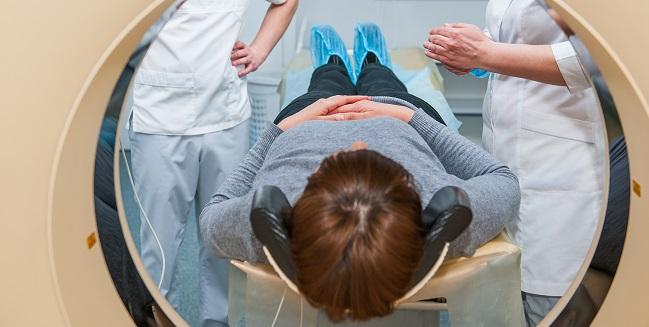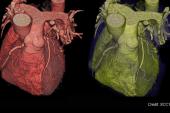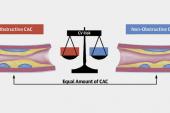SCCT Publishes Coronary CTA Advice as ACC/AHA Update Drags On
The document is “not meant to be a substitute” for the pending guidelines, but fills a gap addressing recent evidence, experts say.

In 2016, the United Kingdom pushed coronary CTA to the forefront of chest pain assessment with the National Institute for Health and Care Excellence (NICE) guidelines, and Europe followed suit in 2019. However, US clinicians have been anxiously waiting an update from the ACC/AHA, which was initially anticipated for late 2018, but has seen a series of delays. The lack of chest pain guidelines has been cited as a main reason this modality has yet to be widely adopted and properly reimbursed.
The new SCCT document, which was formally published in the Journal of Cardiovascular Computed Tomography last month, “was not meant to substitute for the ACC/AHA guidelines,” senior author Harvey Hecht, MD (Icahn School of Medicine at Mount Sinai, New York, NY), told TCTMD. “We don't speak for the ACC or AHA. . . . It's actually been planned for several years; it's just taken quite a while to get it done.”
“It wasn't meant to be competitive with the ACC/AHA guideline, although certainly I think if that had come out sooner, then this one probably might not even have come to fruition or it might have had a totally different focus,” co-author Leslee Shaw, PhD (Weill Cornell Medical College, New York, NY), further clarified to TCTMD.
Shaw, who serves on the writing committee for the ACC/AHA document, said she expects it to be published by May, a fact corroborated by a spokesperson for the ACC who told TCTMD it should be out by the second quarter of this year.
Highlights From the Document
The focus of the SCCT document was to summarize the available evidence supporting the use of coronary CTA, especially for patients who have established, not merely suspected, coronary disease, Hecht explained. This represents “a big increase in the catchment of people who are eligible for CTA,” he said. “We have also stated very clearly that CTA is appropriate as the first-line test for evaluating patients. That has never been explicitly stated before.”
The authors also support the use of gating often-ordered CTAs that are performed to rule out aortic dissection and pulmonary embolism in order to evaluate the coronary arteries without the use of additional radiation or contrast. “That's really a new application,” Hecht said. “Some institutions are already doing this, especially for aortic dissection studies, but we'd like to make it a uniform policy.”
He also pointed to their expanded indications for using CTA to evaluate patients with stents. “We said it is appropriate to evaluate stents that are 3 mm or greater in diameter and it may be appropriate to evaluate smaller stents with appropriate attention paid to finer details,” Hecht explained. “We have also made a positive statement about doing FFR CT and stress myocardial perfusion to evaluate the significance of coronary lesions.”
Shaw pointed to the evidence synthesis within the new document as its greatest strength. “It just steps you through the best means of concise reviews and highlights the evidence and the gambit of abilities of CT and how it fits within the diagnostic evaluation pathway and what you need to focus in on, particularly around plaque, around functional significance, and how you would use all of that and put it all together in patient care,” she said, adding that it also delves into more-nuanced areas such as CT perfusion and vein graft patency in CABG.
Reimbursement and Further Updates
While the writing committee for the SCCT document includes authors from both the United Kingdom and Canada, both Hecht and Shaw say they expect this to primarily impact practice in the United States. “The US has been far behind in this,” Hecht said.
Shaw pointed to reimbursement as the main reason why cardiac CT has not expanded at US centers. “At a seventh of the price of cardiac PET on the Medicare side, unless it's going to be reimbursed better, it's not going to grow,” she said, adding that things are unlikely to change in the near future. “Medicare seems pretty stuck. And unless there is some kind of a huge shift in how they look at this, which I don't expect, you're going to continue to have a low reimbursement. Unless you can have a shift more toward value-based imaging, it's not an attractive modality.”
It's a slightly different story with private payers, which have eased the burden of receiving reimbursement for cardiac CT in recent years. “The amounts have not increased, but it's much easier to obtain authorization with a lot of the insurance companies finally treating it as an equivalent to a stress test,” Hecht said. “In the past, most of the companies have said, ‘Well first do a stress test and if there are still questions then we will approve a coronary CTA.’ It's now on the same line, same level of acceptance as stress testing for many of the insurance companies.”
Looking forward, Hecht said he “would like to see the ACC/AHA document, when it finally occurs, to acknowledge that CTA is a first-line test at least equivalent to stress testing, and in certain situations, superior to stress testing. I would like them to go at least to the extent that the European guidelines have gone. . . . That will increase the utilization of coronary CTA.”
In the past, the “reflex response” to a patient with chest pain has been to order a stress test, he continued. “To change that is an enormous task. You're really changing the basic paradigm that's instilled in people from medical school on.”
As for this document, the SCCT will plan to continue updating it as new research is published in the field. “As we start to evolve around the use of CT in people with known coronary disease, this is going to have to be updated,” Shaw said, adding that she also expects new data with regard to expanding revascularization into nonobstructive disease with a large plaque burden.
Yael L. Maxwell is Senior Medical Journalist for TCTMD and Section Editor of TCTMD's Fellows Forum. She served as the inaugural…
Read Full BioSources
Narula J, Chandrashekhar Y, Ahmadi A, et al. SCCT 2021 expert consensus document on coronary computed tomographic angiography: a report of the Society of Cardiovascular Computed Tomography. J Cardiovasc Comput Tomogr. 2021;Epub ahead of print.
Disclosures
- Hecht reports serving on the scientific advisory board for and holding stock options in Arineta and serving as a consultant for Cleerly.
- Shaw reports no relevant conflicts of interest.





Comments